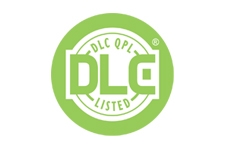
News
New spec promotes energy-efficient indoor agricultural lighting
March 11, 2019 - With the advent of ‘vertical farming’ and the legalization of cannabis cultivation centres, lighting for indoor agriculture is one of the fastest-growing load categories for many electric utilities in Canada and the U.S.
March 11, 2019 By Damon Bosetti

By way of example, a U.S. Department of Agriculture (USDA) report by Navigant Consulting in late 2017 pegged the annual electricity consumption of horticultural lighting installations at 5.9 TWh—equivalent to the annual electricity production of a GW-class Canadian hydroelectric station—and estimated it will increase by 15 to 25% per year, as more indoor agricultural operations are launched. A similar increase can be expected in Canada—or possibly a larger one, with a colder climate pushing more cultivation indoors.
While an increase in ‘grow lights’ means an increase in energy costs for farmers, the same Navigant report suggested switching agricultural lighting to LED technology could reduce the sector’s annual consumption of electricity by 40%.
In late 2018, the DesignLights Consortium (DLC)—which helps electrical utilities define and incentivize high-performance lighting products—announced a first-of-its-kind standard for horticultural fixtures. The goal is for public utilities across North America to rely on the new specification and a corresponding qualified products list (QPL) when incentivizing lighting in energy-efficiency programs for their agricultural customers.
As a starting point, LED products qualified under the new standard will need to be at least 10% more efficient than the next-best alternative—i.e. the 1,000-W high-pressure sodium lights used in many indoor agriculture settings today.
Further, given both the need to increase energy efficiency and the nascent state of scientific understanding about artificial lighting for plants, DLC has committed to revising the specification to more rigorous standards every two years, based on actual observed statistics in its QPL. (Both the initial listing of products and the updates will rely on data generated by independent testing labs, not self-reporting by manufacturers.)
DLC’s first round of requirements for horticultural lighting will be in effect through October 2020. The organization will alert manufacturers in April 2020 of the second round’s higher efficacy requirements. Then, with a six-month listing grace period, manufacturers will have a full year of lead time to sell through their existing inventory or update their products.
The new performance standard and related policies were informed by a rigorous stakeholder input process, including interviews with 20 horticultural lighting manufacturers and consultations with such organizations as the Lighting Enabled Systems & Applications (LESA) engineering research centre at Rensselaer Polytechnic Institute in Troy, N.Y., the multi-university Greenhouse Lighting and Systems Engineering (GLASE) consortium, the American Society of Agricultural and Biological Engineers (ASABE) and AeroFarms, a large-scale indoor grower of leafy greens and herbs in Newark, N.J.
The specification sets a ‘floor’ for photosynthetic photon efficacy (i.e. how efficiently a fixture converts electrical power to photons) and technical requirements for the lifetime of such components as drivers, LEDs and fans, acknowledging the importance of ensuring early adopters of energy-efficient horticultural lighting enjoy a positive experience. Also, recognizing how various levels of blue, green, red or ‘far red’ light can contribute to optimal plant performance in various crops and/or environments, DLC also requires enhanced reporting on light spectrum content in its new QPL.
Damon Bosetti is technical manager at DLC. For more information about the organization’s testing and reporting requirements for LED-based horticultural lighting, click here. There will also be a dedicated information session at DLC’s annual stakeholder meeting in April in St. Louis, Mo.
Print this page